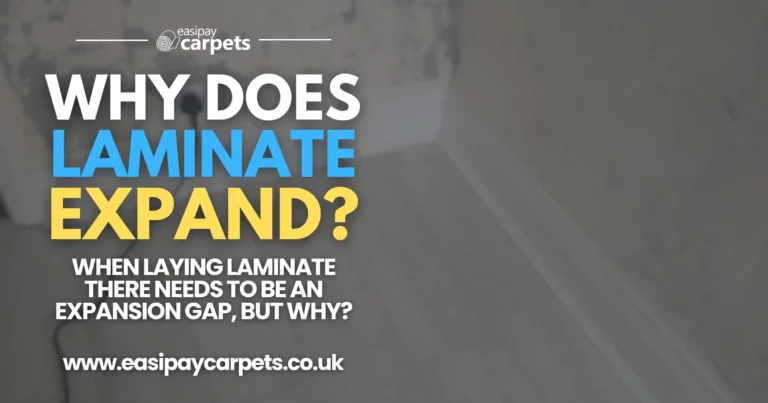

Why Does Laminate Flooring Expand?
Laminate flooring is a popular choice for many homeowners due to its affordability, durability, and aesthetic appeal. However, despite its many benefits, laminate flooring can sometimes experience expansion, leading to issues such as buckling, warping, or gaps between the planks. Understanding the reasons behind laminate flooring expansion and how to address them is crucial for maintaining the appearance and longevity of your floors. This guide will explore the common causes of laminate flooring expansion and provide practical solutions to mitigate this issue.
Understanding Laminate Flooring Expansion
What Causes Laminate Flooring to Expand?
Laminate flooring consists of multiple layers, including a core layer typically made from high-density fiberboard (HDF) or medium-density fiberboard (MDF), which are both composite materials that react to changes in moisture and temperature. Here are the primary reasons why laminate flooring might expand:
1. Moisture Exposure
Moisture is the most common cause of expansion in laminate flooring. When laminate planks absorb moisture from the air or from spills, the core material swells, causing the planks to expand. Common sources of moisture include:
- Humidity changes in the environment.
- Spills that are not promptly wiped up.
- Moisture rising from concrete subfloors.
- High moisture content in the room, such as in kitchens, bathrooms, and basements.
2. Temperature Fluctuations
Like moisture, changes in temperature can cause laminate flooring to expand and contract. Laminate flooring installed in areas with large temperature swings may experience more pronounced expansion and contraction cycles.
3. Improper Installation
Improper installation can also lead to problems with expansion. This includes:
- Not leaving enough expansion gaps around the perimeter of the room. Laminate floors need space around the edges to expand and contract with changes in humidity and temperature.
- Incorrectly locking the planks together during installation, which can prevent the floor from expanding evenly.
4. Inadequate Acclimation
Laminate flooring needs to acclimate to the room’s environment before installation to stabilize the material relative to the local humidity and temperature. Failure to acclimate the flooring adequately can lead to excessive expansion after installation.
Solutions and Preventive Measures
To address and prevent the expansion of laminate flooring, consider the following tips:
Manage Humidity and Temperature
- Use a dehumidifier or air conditioner to maintain indoor humidity levels between 30% and 50%, which is ideal for laminate flooring.
- Avoid installing laminate in areas where the temperature and humidity fluctuate significantly, or ensure climate control in these areas.
Proper Installation Techniques
- Always leave the recommended expansion gaps around the edges of the room, as specified by the flooring manufacturer. These gaps are usually hidden by the baseboard or molding.
- Follow the manufacturer’s installation guidelines carefully, ensuring that planks are properly locked together and laid flat.
Promptly Address Spills and Leaks
- Clean up any spills immediately to prevent water from seeping between the planks.
- Inspect appliances and plumbing for leaks in areas where laminate flooring is installed to prevent unnoticed water damage.
Correct Subfloor Preparation
- Ensure the subfloor is level, clean, and dry before installing laminate flooring.
- Use a suitable vapor barrier or underlayment if installing over concrete or other moisture-prone subfloors.
Acclimate Your Flooring
- Allow new laminate planks to acclimate to your home’s conditions for at least 48 hours before installation. Keep them in the room where they will be installed, still in their packaging, to stabilize.
Conclusion
Expansion in laminate flooring is primarily caused by moisture and temperature changes but can be exacerbated by improper installation or inadequate acclimation. By understanding these factors and implementing the above solutions, you can significantly reduce the risk of expansion-related issues and enjoy a beautiful, stable laminate floor for years to come. If you continue to experience problems, consulting a professional flooring contractor can provide targeted solutions based on the specific conditions of your home.
Easipay Carpets can help you get brand new flooring without the high up-front cost – by simply letting you spread the cost of the flooring over time instead. There’s no interest on our plans so you aren’t spending a penny more than you would buying it outright and we include underlay, door trims, carpet grippers and laminate beading for free. Prices start from just £10 per week!
It starts with a free home appointment and quote, to get booked in at a time that suits you, tap the “Get Started” button below and fill out the contact form!
Still Got Questions? Here's 10 FAQs!
It is generally recommended to leave an expansion gap of about 10mm around the perimeter of the room. This allows the laminate flooring to expand and contract without buckling. The gap is covered with beading to keep it looking nice and hide the expansion gap.
While laminate flooring can be installed in kitchens with proper precautions (like promptly cleaning up spills), it is less ideal for bathrooms where moisture levels are consistently high. For bathrooms, consider water-resistant flooring options such as vinyl or tile.
Spills should be wiped up immediately with a dry or slightly damp cloth. Avoid using wet mops or steam cleaners, as excessive water can seep into the seams and cause the planks to swell.
Most of the time, underlayment is crucial for laminate flooring as it provides a moisture barrier, reduces noise, and helps to smooth out minor subfloor imperfections. If the flooring is not on the ground floor, or your subfloor already has moisture protection then it may not be required. Always use the type of underlayment recommended by the flooring manufacturer.
If laminate flooring has buckled due to expansion, it may be necessary to remove the baseboards/beading and trim to see if adequate expansion gaps were left during installation. If not, trimming the flooring might be required. In severe cases, it may be necessary to replace affected sections of the flooring if the joints have become damaged due to lifting.
Lifting or tenting often occurs when the laminate planks have expanded more than the expansion gap allows. The planks lift as that’s the only way for them to go if they can’t expand from side to side. This could be down to excessive moisture which makes the planks swell further than the 10mm expansion gap would allow.
Yes, ambient humidity can affect laminate flooring. High humidity can cause the planks to expand, while low humidity can cause them to shrink. Maintaining indoor humidity levels between 30% and 50% is ideal. This is why we caution against having laminate flooring installed in bathrooms, even if there’s bath mats to protect it.
Essential tools for installing laminate flooring include a tape measure, utility knife, spacers, a hammer or rubber mallet, and a tapping block. A pull bar may also be needed to install the last row of planks.
Laminate flooring typically needs to acclimate for at least 48 hours in the room where it will be installed. This period allows the flooring to adjust to the temperature and humidity conditions of the room.
Laminate can be installed over vinyl flooring as long as the existing floor is flat, clean, and well-adhered to the subfloor. However, check with the manufacturer for specific recommendations and ensure that the added height does not create issues with door clearance or transitions to other rooms.




